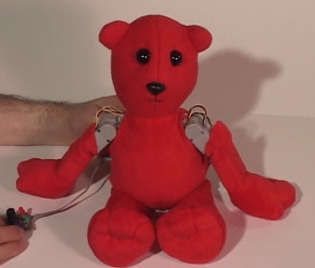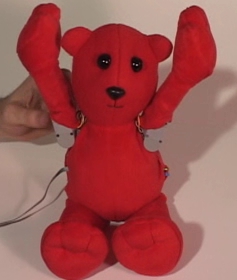|
Pose training allows users to dynamically generate behaviors by physically manipulating the device,
recording poses, and playing recorded poses back in succession. A good way to describe this method to
someone not familiar is relating the process to clay-mation. Clay is moved into an initial position and
a picture is taken, then the clay is moved a small amount and photographed again, and so-on. Our idea
could be thought of as "robo-mation", but instead of miniscule changes, main poses are recorded within
the robot and played back. Software evens out the movements and you're left with a complex motion that
would take days to code by hand. This method of motion control doesn't require a computer and is easily
learned without any prior programming knowledge. There isn't a limit to the number of poses that can make
up a behavior. Some behaviors can be looped to create repeating motions like walking or driving forward.
The more poses that make up a behavior the smoother the output motion and the closer the robot follows
the intended path.
|

